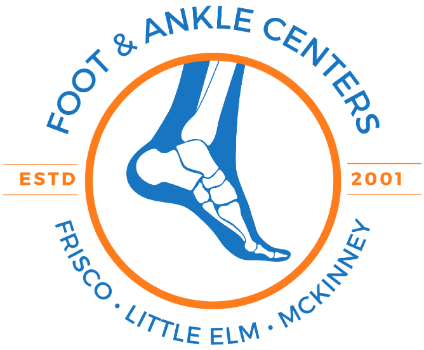Understanding Foot Calluses: Symptoms, Causes, and Treatment
Foot calluses are a common foot condition that can cause discomfort and affect your overall foot health. At the Foot & Ankle Centers of Frisco, Little Elm, and McKinney, we see many patients seeking relief from calluses and the issues they can cause. In this blog post, we’ll explore the symptoms of foot calluses, their common causes, and effective treatments to help you manage and prevent these uncomfortable patches of hardened skin.
What Are Foot Calluses?
Foot calluses are thickened areas of skin that develop due to repeated friction or pressure. They are typically found on the soles of the feet, heels, and toes. Calluses form as a protective response to excessive rubbing or pressure, leading to the buildup of dead skin cells.
Symptoms of Foot Calluses
Recognizing the symptoms of foot calluses can help you address them promptly and prevent further discomfort. Common symptoms include:
- Thickened Skin: Calluses appear as thickened, hard patches of skin. They are often yellowish or gray in color and can vary in size.
- Rough Texture: The surface of a callus is usually rough and uneven, which can cause discomfort when walking or wearing shoes.
- Discomfort or Pain: While calluses themselves may not always be painful, they can cause discomfort or pain if they become too thick or if pressure is applied to them.
- Dryness and Cracking: Calluses may become dry and cracked, which can lead to further irritation and potential infections.
- Changes in Skin Color: In some cases, calluses may become darker or show discoloration due to prolonged pressure.
Common Causes of Foot Calluses
Foot calluses can develop due to various factors, including:
- Improper Footwear: Shoes that do not fit properly or lack adequate cushioning can cause friction and pressure points, leading to callus formation.
- High-Pressure Areas: Areas of the feet that experience frequent pressure, such as the heels or the balls of the feet, are prone to developing calluses.
- Foot Deformities: Conditions like bunions or hammertoes can alter the way weight is distributed on the feet, leading to callus formation.
- Abnormal Gait: Walking or running with an abnormal gait can cause uneven pressure on certain areas of the feet, contributing to callus development.
- Prolonged Standing or Walking: Occupations or activities that require prolonged standing or walking can increase the risk of developing calluses due to repetitive pressure.
Diagnosis of Foot Calluses
A podiatrist can diagnose foot calluses through a physical examination and by discussing your symptoms and footwear choices. In some cases, additional tests or imaging may be necessary to rule out other conditions or to assess the extent of the callus buildup.
Treatment Options for Foot Calluses
Treating foot calluses involves both addressing the symptoms and managing the underlying causes. Here are some common treatment options:
1. Over-the-Counter Treatments
- Callus Pads: Special adhesive pads designed to reduce pressure and friction on callused areas.
- Moisturizing Creams: Creams containing salicylic acid or urea can help soften and break down the hardened skin.
2. Professional Foot Care
- Debridement: A podiatrist can perform debridement, which involves gently removing the thickened skin with specialized instruments.
- Custom Orthotics: Custom-made shoe inserts can help redistribute pressure and reduce friction, preventing further callus formation.
- Footwear Recommendations: A podiatrist can provide advice on choosing appropriate footwear to minimize pressure and friction on your feet.
3. Home Remedies
- Soaking: Soaking your feet in warm, soapy water can help soften calluses. After soaking, gently exfoliate the softened skin using a pumice stone or foot file.
- Exfoliation: Regular exfoliation of the feet can help prevent callus buildup. Use a foot scrub or file to remove dead skin cells.
4. Lifestyle Modifications
- Footwear Adjustments: Invest in well-fitting shoes with adequate cushioning and support to reduce pressure on your feet.
- Foot Hygiene: Maintain good foot hygiene by keeping your feet clean, dry, and moisturized to prevent callus formation and associated complications.
Preventing Foot Calluses
To reduce the risk of developing foot calluses, consider the following preventive measures:
- Choose Proper Footwear: Wear shoes that fit well, provide adequate cushioning, and accommodate any foot deformities or issues.
- Use Protective Pads: Consider using gel or foam pads in areas prone to calluses to reduce friction and pressure.
- Regular Foot Care: Incorporate foot care practices such as moisturizing and exfoliating into your routine to maintain healthy skin.
- Address Foot Issues Early: Seek professional help for foot conditions such as bunions or hammertoes that may contribute to callus formation.


Leave a comment
0 Comments